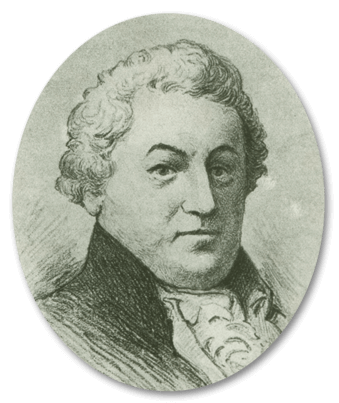Ship's Crew

Samuel Nicholson
Rank(s): Captain
Dates of Service: 7/22/1798 - 6/5/1799
Birth Date: 1743
Death Date: 12/29/1811
Samuel Nicholson, Sr., was born in 1743 in Chestertown, Maryland, one of the sons of well-to-do merchant Joseph Nicholson and his wife, Hannah Scott. He was commissioned a lieutenant in 1776. Samuel’s brother James was appointed the senior captain in the Continental Navy. Samuel was sent to Nantes, France to take command of the cutter Dolphin, then fitting out. In May 1777, Dolphin sailed in company with the merchantman Reprisal and the brigantine Lexington, which were under the command of Commodore Lambert Wickes, on a successful attack against British merchant shipping in the Irish Sea. Detached after returning to port, Nicholson was promoted to captain and ordered to take command of the frigate Deane (32 guns), then building at Nantes. After sailing back to the United States to complete outfitting, he made a number of anti-shipping cruises in the Caribbean between 1779 and 1783. Nicholson was among the original members of the Massachusetts Society of the Cincinnati, a society organized by veteran officers of the Continental Army and Navy “to preserve the rights so dearly won; to promote the continuing union of the states; and to assist members in need, their widows, and their orphans.”
When the United States Navy was reinstituted in 1794, six men were commissioned as captains to oversee the construction of six frigates, which they would then command. Nicholson was the second senior of the group, and oversaw the ship built at Boston. That ship, eventually named Constitution, was launched on October 21, 1797 and first went to sea on July 22, 1798. Because the ship was of a novel design, Nicholson encountered a number of difficulties on the first cruise. The binnacles were assembled using iron nails, skewing the compasses. His carpenter’s gang had to build a boat on board in lieu of one not provided. In addition, the bowsprit, foremast, and mainmast all proved insufficient for the amount of sail the ship was expected to carry, and often threatened to collapse. There were other problems not associated with the ship’s fabric. In August, Constitution stopped a privateer manned by French officers. Despite the crew’s producing papers showing that they were expatriate royalists operating under British command, Nicholson took the ship as a prize and brought it into port. The mistake cost the United States $11,000 in reparations. Later, Nicholson legitimately captured a former British vessel that had been taken by the French, but wary from his earlier mistake, he released the prize after a day. Nicholson was also plagued by poor relations with his officers. Secretary of the Navy Benjamin Stoddert, displeased with Nicholson’s performance, sought his replacement. He left Constitution on June 5, 1799.
Nicholson’s next assignment was to oversee the projected construction of a 74-gun ship-of-the-line at Boston. The program was halted even before a keel was laid, however, and he was assigned to command the new Boston Navy Yard. As the navy fought the first Barbary War, Nicholson remained at the yard, which completed only one vessel larger than a gunboat during his tenure. He died there in the new Commandant’s House on December 29, 1811, and was interred in the crypt of Boston’s Old North Church.
The American Revolutionary War service of Samuel Nicholson and his two brothers, James and John, was commemorated by the naming of a torpedo boat destroyer (1905) and two destroyers (1915 and 1941).
Image Credit